New Episodes of the Era: Benefits Plans, Culture, and Building Great Teams

There’s a straight line connecting the state of the employee experience at your company to the way customers experience your products and services. Guiding and protecting employee experience is critical, and that means creating a deliberate company culture with curated, meaningful benefits as well as creating and empowering strong, diverse teams.
In episodes 15 and 16 of The Era podcast, BambooHR CEO Brad Rencher talks with Robin Bailey, co-founder and partner at Aria Benefits, and Sheryl Tullis, CMO at TA Group Holdings, to explore the connection between benefits and culture and the secret to creating qualified, resilient, and engaged teams.
Keep reading for the highlights, or jump in and listen to the full episodes as you take a post-lunch walk.
Listen to the full episodes, and stay up to date on new episodes of The Era.
Episode 15: How Your Benefits Plan Drives Company Culture
Most business founders know what kind of company culture they want, but it’s when they partner with HR that long-term cultural success becomes possible. Today, nailing your benefits package is more important than ever to attract and retain, and benefits are often the first steps to creating the culture you want to establish.
In this episode, Robin Bailey, co-founder and partner at Aria Benefits, joins us to discuss the following:
- Choosing benefits for remote teams
- Delivering the optimal employee experience
- Embracing the creative space of remote work to serve your business better
Employee Benefits and the Role They Play in Remote Work
When the world shifted to remote work, the conversations surrounding employee benefits also changed. According to Robin, before the pandemic, benefits conversations were practically all the same. However, as there was an increasing reliance on a distributed workforce, more people wanted to know about Employee Assistance Programs (EAPs), virtual health care, and mental health support.
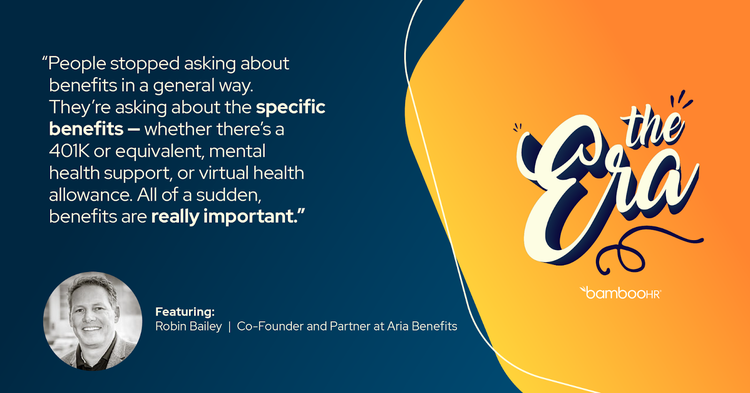
Benefits play a crucial role in attracting and retaining great employees who align with your organization. This role will only continue to grow in importance as remote work models allow for wider ranges of employment opportunities.
By building the best possible benefits package for your business, you can create the company culture you really want and provide an employee experience that fosters loyalty and satisfaction.
What It Takes to Deliver the Optimal Employee Experience
Creating a stellar employee experience for each employee is easier said than done, but that’s exactly what Robin specializes in at Aria Benefits—shaping employee experience through deliberate strategies and systems that deliver the best for your business and your people.
Start with the Fundamentals
A common mistake Robin often sees is startups kicking off with a rich benefits program. While they have good intentions, they usually have to peel back benefits when times get tough—a surefire way to alarm and disappoint employees.
It’s always better to add benefits over time than remove them. “Start with the fundamentals,” Robin says. “Then, build as your business grows.”
Demonstrate Your Care
Now more than ever, employees need to know they are valued. Understanding what your employees want and expect, then using that to shape benefits programs is a great way to shape organizational culture.
In fact, demonstrating care is not a nicety—for many, it’s a prerequisite for long-term employment.
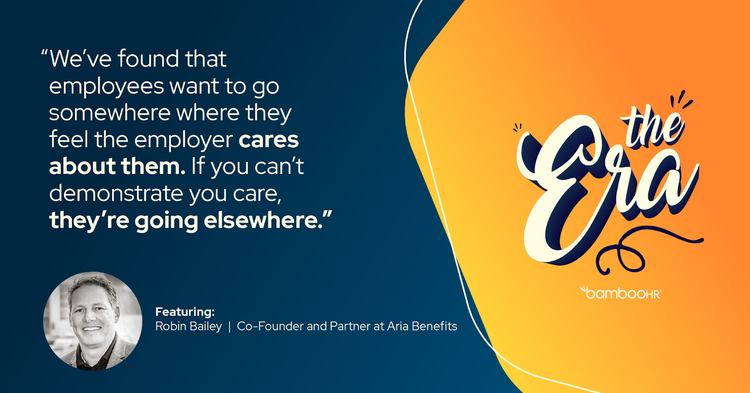
Many benefits are not clearly communicated and therefore aren’t utilized as they could be. This leaves a huge missed opportunity for both employees and employers.
Solid communication is one of the only tools available to you that allows you to improve employee experience without increasing spend. Commit to a communication cadence that continually informs and reminds employees of their benefits and the value they add.
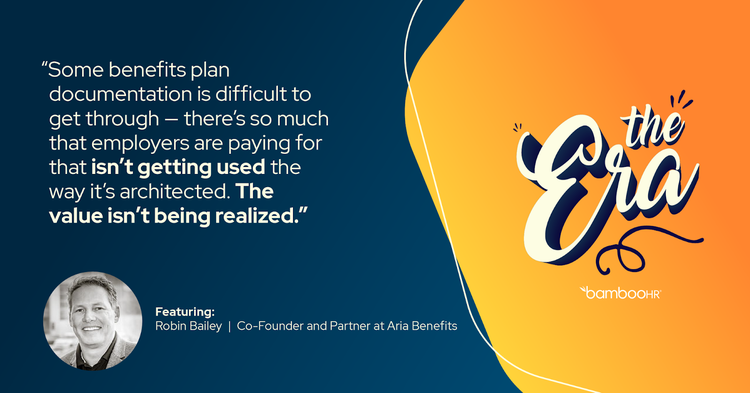
The Creative Potential of Remote Work
While remote work has presented many challenges and increased the importance of benefits, it also offers ways to leverage the creative space of benefits to serve your employees and business better.
Focusing on telehealth allowances and mental health support is essential, Robin says, but the true leverage lies in the specific details of the benefits. Digital pharmacies have become an option, and many plans also offer delivery services. These add-ons are often free and allow you to serve your remote employees better.
“It’s all about adding value for your employees,” Robin says.
Listen to the full conversation with Robin.
Episode 16: Who Leads Your Department of Why?
In this episode of The Era, Sheryl Tullis, CMO and self-proclaimed Lead of the Department of Why at TA Group Holdings, shares how qualified, resilient, and engaged teams are cultivated from the ground up. In her conversation with Brad, Sheryl covers the following:
- How military service helped inform her civilian career
- How to begin the process of bringing diverse experience onto your team
- How to build trust and resilience in your people
How Sheryl’s Military Service Guided Her Civilian Career
Sheryl’s career has included many types of roles, but while she values them all, she attributes much of her trailblazing to her military experience. In fact, as an advocate for veterans in the workplace, Sheryl suggests there are many military skills, characteristics, and practices that translate into valuable civilian job skills.
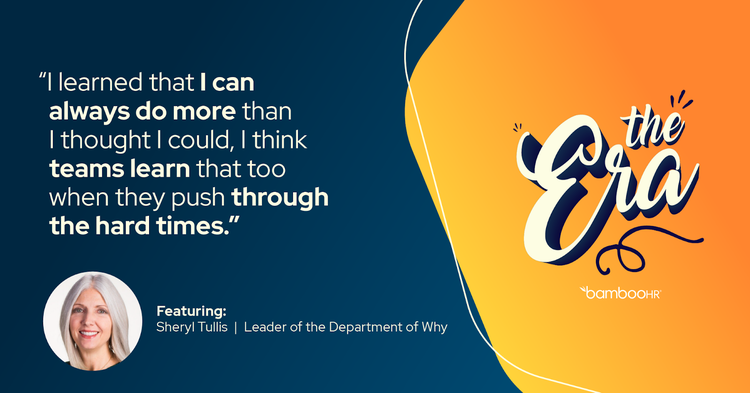
Thriving in Ambiguous Situations
Sheryl points out that veterans are no strangers to ambiguous situations. Trained using the concept of VUCA (volatility, uncertainty, complexity and ambiguity), veterans are adept at being in unfamiliar environments and adapting quickly.
“They are used to going into a new environment—maybe a new country overseas—quickly getting up to speed, communicating clearly and concisely and figuring out how to use their limited resources,” Sheryl says.
These practices and foundational skills are fundamental in the modern workplace as we continue to see economic shifts.
Technological IQ and Learning Practices
Veterans have been trained using some of the most advanced technologies on the planet. Not only does this result in technological skills, but it also creates an ability to quickly adapt to new tools and practices under pressure.
“Veterans are comfortable with discomfort,” Sheryl says. “And they're comfortable with a steep learning curve.”
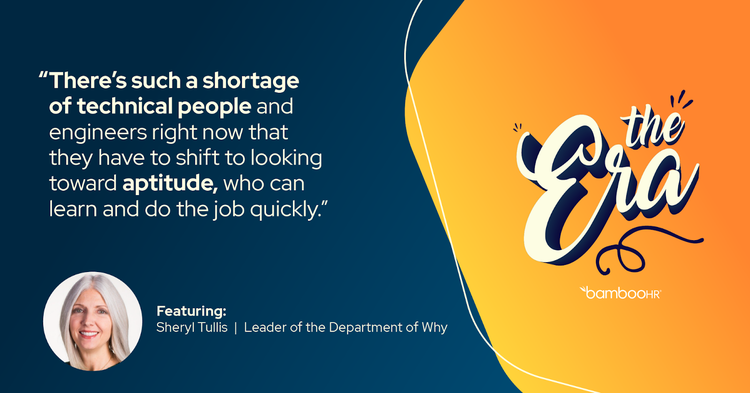
“There's such a shortage of technical people and engineers right now that we have to shift to looking at aptitude and who can learn and do the job quickly,” she says. “We should look at more veterans who haven't had the experience, but [who] have the skills, drive and grit to see a mission through.”
Relentless Focus on Communication, Teamwork, and Integrity
Oftentimes in business, communication can become muddled on the way to the employees who must carry out certain tasks, but the military creates an environment where everyone is essential to the mission, so clear communication and ironclad delegation is critical. When the message is clear, even those at the lowest level of the chain of command can feel invested in the mission on an individual level.
In a team environment where everyone must rely on one another, communication, trust and integrity are all vital. When you practice these principles enough, they become part of your identity and translate to the private sector.
Bringing Diverse Experience into Your Team
One of the best tools businesses can use to access the largely untapped talent pool of veterans is the United Services Organization, better known as the USO. Through the USO’s Pathfinder Program, veterans receive assistance in transitioning into the civilian world.
“They offer education and resume assistance and can help match a job description to veteran skills,” Sheryl says.
While Sheryl is passionate about bringing more veterans into the workforce, she also advocates for women and underrepresented populations. She offers insight into how to include these populations in the workforce as well.
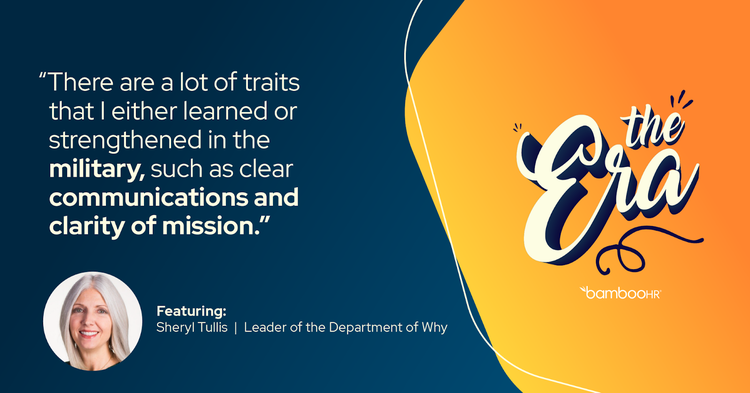
Increasing Access
The first step that needs to be taken to incorporate greater diversity is to increase access for diverse populations.
“There should be more community certification programs for the STEM fields and the skilled trades,” Sheryl says. “Let's make sure people don't have to be able to afford expensive college careers to land these well-paying jobs.”
Incorporate Diversity into Leadership Positions
Increasing representation in the boardroom and every layer of leadership enables people to see their potential. Managers and leaders play a huge role in growing employee confidence and should know their people well enough to recommend leadership positions to those that would serve well, rather than resorting to candidates that are the loudest or most obvious.
Necessities for Building Trust and Resilience in Your People
According to Sheryl, resilience is one area that is hugely lacking in the modern workforce. With widespread burnout, establishing trust and resilience is essential for retention and success.
“When people are disengaged, they feel like they don’t belong,” she says. “Whether it’s a question of culture, skillset, or something else. It’s not their fault—it’s on us as leaders to make them feel like they belong.”
While this sense of belonging can lend to increased resilience, Sheryl says there’s a lot that we can learn from veterans about the psychology and physiology of resilience.
“Sometimes, the best way to show resilience is to prove to yourself that you can do it. There are tools and capabilities that we can teach. Just like the qualities of veterans, we can use their resilience skills as tools to teach others.”
Listen to the full conversation with Sheryl.
Join our journey to discover what happens when you put employees first by subscribing to The Era on Apple Podcasts, Spotify, our website, or anywhere you get podcasts. If you like what you’ve heard, please rate the show. Your feedback helps us make content that’s valuable to you and your work.